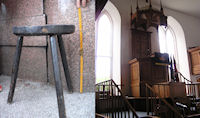
Figure 14: Stools of repentance. Left - B3: Cumbernauld, Lanarkshire. Right - B7: Duirinish, Ross-shire © G. McKee 2009. Several other examples are on display in the National Museum of Scoland, Edinburgh.
At least seven repentance stools remain in Scotland today, each different in style and character. As can see seen in Figure 14, the stools vary enormously, and the obvious similarities, or indeed many differences, among the small number of preserved examples were found to be less meaningful than their shared non-physical properties. These qualities imbued discipline stools with such punishing and shaming capacities that, whatever their form, they were suitable for all degrees of sinner, and people would pay significant sums to reduce the number of weeks they had to appear on the stool (Todd 2002, 125-43).

Figure 14: Stools of repentance. Left - B3: Cumbernauld, Lanarkshire. Right - B7: Duirinish, Ross-shire © G. McKee 2009. Several other examples are on display in the National Museum of Scoland, Edinburgh.
In the late medieval Mass, at the beginning of Lent, penitents were made to stand below the altar before undertaking acts of penance (Arnold 2005, 172). Penance itself was primarily a private affair imposed by the priest who heard confession. Confession was heard in a private but easily visible place within the church and, crucially, it was preferable that the penitent sit higher than the confessor (Arnold 2005, 170-2). It is Todd's understanding that Reformed Scotland is unique in the practice of seating penitents just below the pulpit, and there are multiple examples throughout the kirk session records which suggest that in principle, if not always in practice, it was considered desirable that the stool be high; some even requiring the penitent be helped up and down or use ladders (Todd 2002, 132). Lower stools were often, in fact, to be stood upon, except by the pregnant or infirm (Todd 2002, 125-143). It is, therefore, posited that the stool represents a form of continuity where existing understandings of confession and penitence were combined to form a novel connection: the idea of the penitent's stool and its placement before the pulpit, which replaced the high altar as a focal point.
Continuity in the secular meaning of chairs would also have informed early modern Scots' interpretations of the penitent's stool. The chair has a long history as a symbol of status; the king's throne and the bishop's cathedra (from which the cathedral takes its name) perfect examples (Steane 2001, 136-7). Since medieval times a strict hierarchy had existed regarding seating in the church, reflecting not only religious but secular status. In the reformed kirk people fought over chairs. There are even instances where rival's pews were made into penitent's stools as an insult (Graham 1996, 250-1; Steane 2001, 140-1; Todd 2002, 323-4). Sitting on the penitent's seat, therefore, had the potential not only to indicate the penitent's relegation from the community of the body of Christ, but also, simultaneously, removal of status in the secular world. Significant cultural capital was, therefore, required of the audience in the kirk to understand the multiple layers of meaning with which the stool and its place before the pulpit were imbued. This is confirmed by cases where English visitors to kirks did not understand its significance (Todd 2002, 321). The penitent's stool was more than a seat in a conveniently public place: it was embedded within existing culture and ongoing change.
Choose your own | Sackcloth | The body of Christ | Iconoclasm
© Internet Archaeology/Author(s)
University of York legal statements | Terms and Conditions
| File last updated: Thu May 26 2011